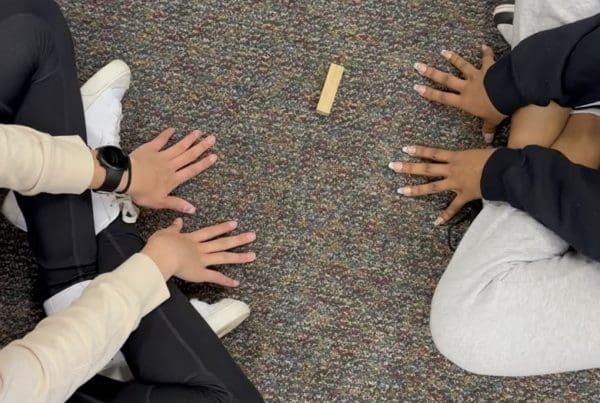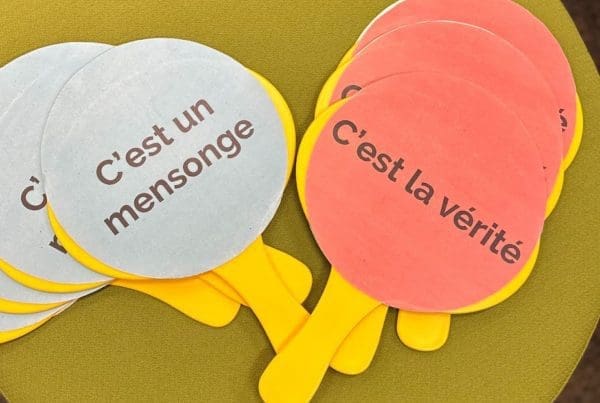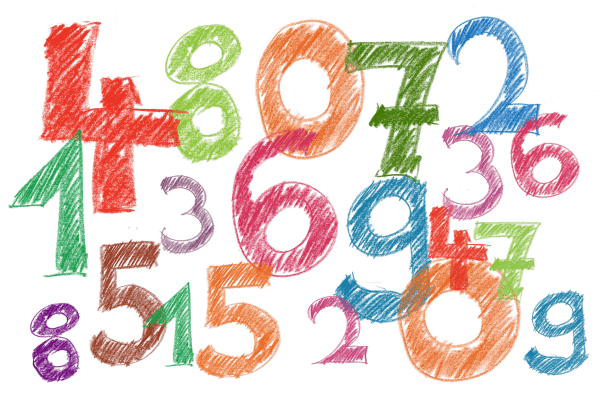ACTFL 2024 was unforgettable for so many reasons. It was the perfect opportunity to reconnect with colleagues, learn from incredible educators and make meaningful connections with new friends. This year was particularly special because it marked my final presentation as a classroom teacher. Standing before a room full of supportive and eager teachers, I enjoyed sharing one of my favorite instructional strategies: using a target language TV series to engage students.
My dear friend Kristy Placido inspired this approach, whose 2017 ACTFL session on incorporating films and TV series left a lasting impression on me. Her enthusiasm and creative strategies pushed me to search for a French TV series that could do the same for my students. Quite quickly, I landed on Les Revenants (The Returned), an intriguing show I sensed would interest my students and lend itself to engaging conversations. What started as a hunch and an experiment became a transformative tool for fostering language acquisition and engaging learners.
Why Use a TV Series?
TV series offer a wealth of opportunities for language learning that go far beyond the surface. The episodic nature of a series allows for complex narratives and deep character development, providing plenty of material for discussions, predictions and comparisons. Additionally, TV combines visual and auditory input, catering to diverse learning styles and making language more accessible and memorable for all learners.
The authentic context of a TV series also lends itself to revealing cultural nuances students might otherwise miss. For example, my students noticed how French teenagers in Les Revenants didn’t have cars, walked more than their American counterparts and drank coffee from bowls instead of mugs. These small but significant details enriched their understanding of the culture and the language they were learning.
But the absolute best part of teaching with a TV series is that it’s fun and engaging. My students were hooked almost immediately on the storyline and characters of Les Revenants, eagerly anticipating each new episode with its storyline twists and turns. This excitement spilled over into classroom activities, creating a buzz that made teaching and learning more rewarding and meaningful. Watching a series together became a shared journey, sparking conversations about character motivations, predictions about upcoming events and reflections on how the story mirrored or differed from their lives.
Getting Started
Getting started with a TV series in the classroom takes planning, but the payoff is immense. The first step is finding the right show — one that is appropriate for your audience and likely to resonate with their interests. While searching, I used Netflix to explore French-language options, carefully previewing various series to ensure they were suitable and aligned with my teaching goals. After selecting Les Revenants, I sensed I needed to find a way to hook my students. Fortunately, the opening scene of this series easily fit the bill with an unexpected twist to what appears to be a run-of-the-mill field trip. Within the first two minutes of the show, my students were gobsmacked –– my new favorite word that I picked up from watching The Great British Baking Show –– and couldn’t wait to see what would happen next.
Once I had captured their interest — a challenging task in an age where devices and social media often dominate attention — I knew I had the perfect opportunity to introduce the characters central to the storyline. To make the characters more relatable and accessible, I chose images that vividly represented each one and paired them with concise, student-friendly descriptions in the target language they could easily understand. This approach ensured that my students would recognize the characters and feel connected to their roles in the story.
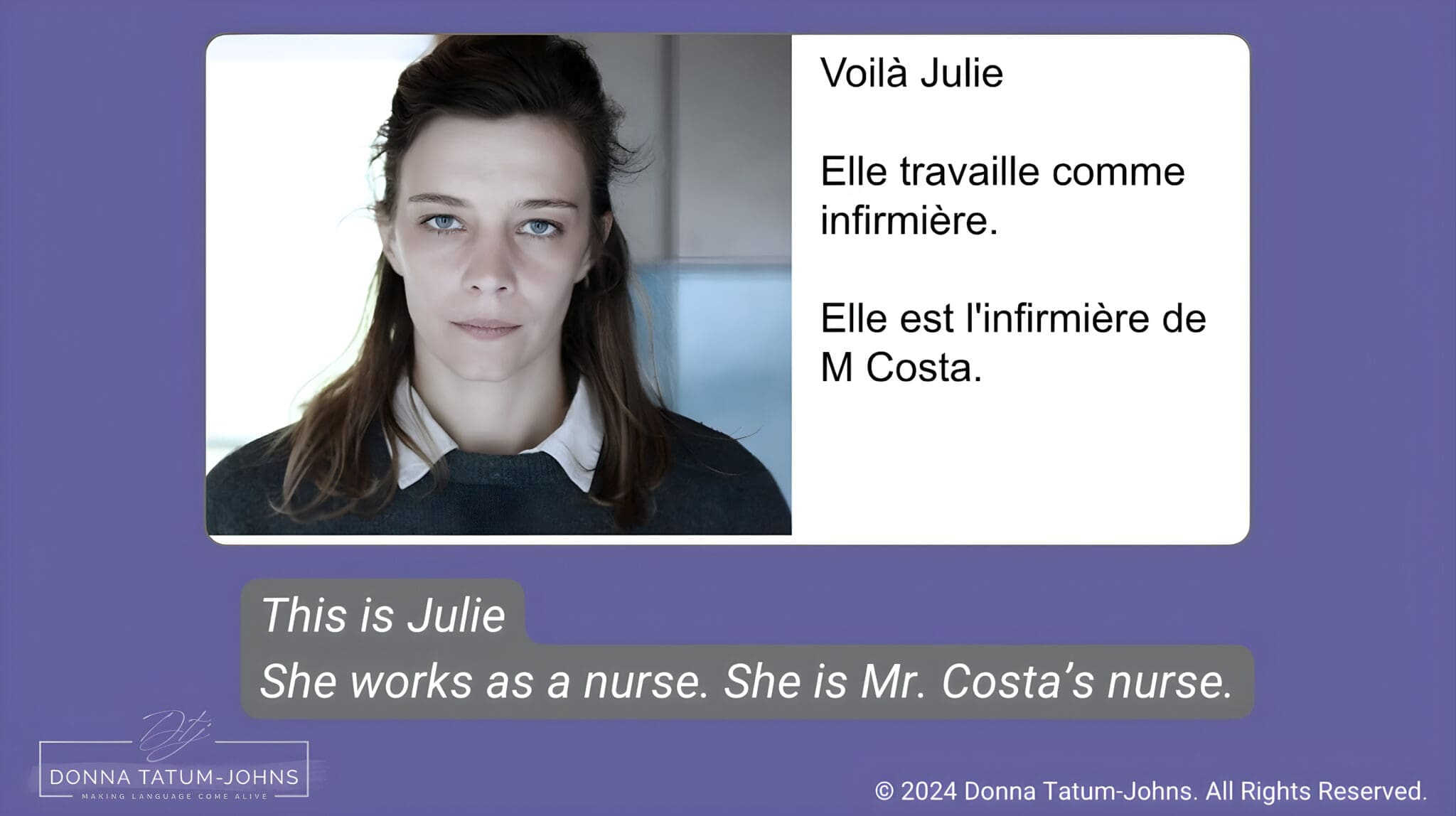
Following Kristy’s lead, I dedicated Fridays to watching Les Revenants, giving my students something to look forward to at the end of the week. This delay allowed me time to craft meaningful activities — whether setting up a scene, designing a reading or listening task, or creating the content for a game — and also allowed me to preview each episode thoroughly.
Attention to detail
I kept detailed notes in a Google Doc, complete with time markers, so I could carefully edit scenes when necessary. These notes helped ensure that the focus remained on the characters and the storyline rather than any on-screen romance that might distract from our objectives. By being intentional about what to include, I created a space where students could engage fully and meaningfully with the show while avoiding unnecessary stress with parents or administrators.
Activities to Enhance Learning
Predicting the future
I designed activities to maximize language exposure and build comprehension throughout the viewing process. Before watching, I often used screenshots paired with prediction activities in the target language. To support this, I created small cardstock manipulatives featuring high-frequency verbs in the future tense, written in the 3rd person singular. The French verb was on the front, while the English equivalent was on the back — a crucial addition to ensure everyone understood the new words. The verb “will go” is two words in English but just one in French, an essential nuance that takes significant exposure and time for students to grasp fully.
Students sometimes would select a verb card, reference the screenshot, and predict what would happen next in the series, creating a dynamic, interactive way to deepen their comprehension and reinforce grammatical concepts. These prediction activities worked well with whole-class discussions, in small groups or when processing with a partner. I frequently varied the group size of my prediction activities to keep things fresh. As I learned from Carol Gabb many years ago, “The brain craves novelty.”
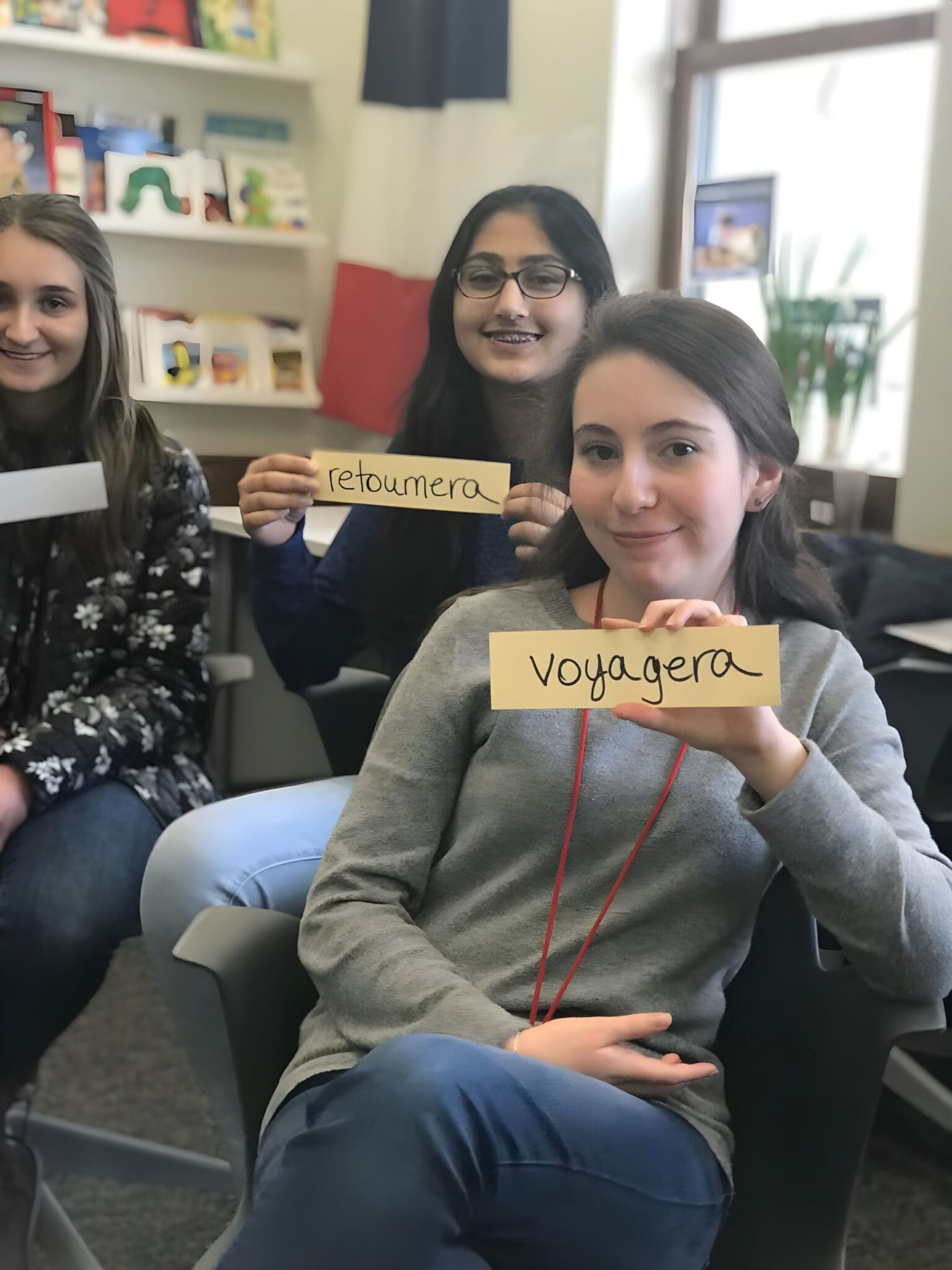
Who said it?
Another of my favorite activities was « Qui l’a dit ? » (Who said it?). While prepping and previewing lessons, I would jot down memorable quotes from various characters, keeping a detailed key as I went. Examples included:
- Ne me regarde pas comme ça s’il te plaît – Camille (Don’t look at me like that).
- Qu’est-ce que j’en sais moi – The father of Camille and Léna (What do I know?).
- Mais où est-ce que vous avez mal exactement – Julie (Where exactly does it hurt?).
Students would listen as I read a quote, discuss it with a partner, and determine who said it — sometimes writing their answers on dry-erase boards or participating in a game like POP UP, inspired by AnneMarie Chase. (If you’re curious about this fun, low-prep game, check out her blog post here!)
When time allowed, I often extended the Qui l’a dit ? activity by integrating the quotes into Gimkit or Blooket. These platforms allowed students to revisit the same language in a fresh and engaging way, reinforcing their learning in a game-like format. Whether reading or listening to character quotes, selecting the correct answer, or racing against the clock, students were exposed to the language in multiple modes, helping to solidify their comprehension.
These activities brought the characters and storyline to life and allowed students to interact with authentic language in purposeful contexts. By presenting the same material in varied ways, I could cater to different learning styles and keep the experience dynamic and fun.
Sequencing Activities
Sequencing activities were also one of my favorite strategies when I had enough time to create one. To prepare, I would break a key scene into manageable chunks, summarizing the events in the target language that was accessible and appropriate for my students.
After watching the scene, I handed out the sequencing activity: key events printed on strips of cardstock. Working with a partner, students would arrange the strips chronologically based on what had just happened. Sometimes, we rewatched the same scene multiple times before they could complete the task. This repetition exposed them to the same language repeatedly, but in a purposeful and engaging way — without me having to announce, “We’re rewatching this!” Instead, they’d frequently ask, “One more time, Madame?”
To streamline this activity, I recommend using different colors of cardstock to prevent stacks from getting mixed up. And let me emphasize: I didn’t create these activities at home or on weekends. I protected my downtime fiercely. Building a collection of activities took time, and I allowed the process to unfold gradually. Creating a wealth of meaningful and varied activities took time –– seven years, to be exact!
Sometimes, the sequencing activity shifted focus to listening. In these cases, I would play the audio of an important scene, pausing periodically as students sequenced the dialogue they had just heard. During this version of the activity, the video remained off to avoid interference from subtitles. I was careful to select scenes I knew would be accessible to the majority of my students, ensuring everyone could participate successfully while strengthening their listening skills.
In my third year of teaching with a TV series, I noticed something interesting: it had taken me a lot longer to wrap up the first episode. This is because I had steadily and gradually added to my arsenal of activities and games I could use with the students. However, I also noticed that my students rarely complained about the pace at which we were moving through the series. They also didn’t complain about the activities, readings or games. And lastly, they rarely complained when I paused the series for a class discussion.
Playful Activities
At the end of the first episode, I always took the time to play a game, like the Unfair Game or Grudge Ball, focusing on the characters –– who they are and what they have done –– with prompts like the ones listed below:
- Je suis l’infirmière de M Costa. Je m’appelle____. (I am Mr. Costa’s nurse. My name is ____.)
- J’étais malade, alors je suis restée chez moi. Ma sœur ne croyait pas que j’étais malade. Mon nom est ____. (I was sick so I stayed home. My sister didn’t believe that I was sick. My name is ____.)
- Ma femme est morte il y a lontemps et aujourd’hui j’habite seul. Qui suis-je ? (My wife died a long time ago and today I live alone. Who am I?)
- Je n’ai pas de voiture alors je suis allée chez M Costa en bus. Je suis ___. (I don’t have a car so I went to Mr. Costa’s home by bus. I am ___.)
- Je suis la mère de Camille et Léna. Mon nom est ____. (I am Camille and Léna’s mom. My name is ____.)
This activity was effective for several reasons. First, the students listened as I read the statements projected on the board. It is worth noting that these statements are in first-person singular, which is vital for interpersonal communication. As educators, we owe it to our students to expose them to this type of language frequently and in meaningful contexts.
Second, the game allowed us to revisit key events and character details from the episode, reinforcing comprehension in a fun and interactive way, using whatever tense I needed. More importantly, it provided an opportunity for students who had been absent to catch up and connect with the storyline.
Finally, it was a community-building experience. At its core, my role is to teach students, not just French, and fostering a strong sense of community is essential for creating a classroom where everyone feels seen, heard, and valued. Playing games seamlessly combined language learning with relationship-building, making it a win for all.
Unexpected Discoveries
Advanced Grammar Structures
One of the most surprising discoveries was how naturally the series supported me using –– and the students gradually picking up –– advanced grammar structures. For instance, it allowed me to ask students questions like the ones listed below in the target language:
- What would you do if you were Claire? –– which requires the conditional.
- What do you believe Camille will leave the house to go see Frédérique? –– which requires the future.
- What do you think Léna should do? –– which requires the subjunctive.
- Before class ended on Friday, had Lucy already arrived at Lake Pub? –– which requires the past perfect.
Our class discussions, which revolved around the characters and events from Les Revenants, allowed students to explore complex structures in a way that felt purposeful and connected to the story.
Fewer Preps: A Game-Changer
By December 2017, I was fully immersed in teaching Les Revenants with my French III students and thrilled by its endless possibilities. Around the same time, my colleague, who taught French IV and AP French, became equally intrigued and decided to incorporate the same series into her classes. This decision was brilliant for several reasons.
First, it significantly streamlined her workload. By using the same lesson plans for French IV and AP French, she reduced the number of preps she had to manage — a massive time-saver for any teacher juggling multiple levels. Moreover, this approach didn’t compromise the quality of her instruction or disadvantage her students. Instead, she adapted the same activities and materials, tailoring the depth of discussions and complexity of tasks to match each group’s proficiency level.
This strategy saved her time and enriched her students’ experience. The shared use of the series allowed for cross-level consistency, with students building on familiar language and cultural themes as they progressed. Her ability to invest more time crafting meaningful lessons, rather than scrambling to prepare multiple unrelated preps, ultimately benefited all involved.
Efficiency doesn’t mean you are cutting corners. Sometimes, it means working smarter to create space for deeper learning and richer experiences. Les Revenants became the perfect tool for doing just that.
English subtitles are just fine!
Using English subtitles often sparks debate among language teachers, but in my classroom, they became a valuable tool rather than a crutch. Far from hindering learning, subtitles supported my students in engaging more deeply with the language and the storyline. My ultimate goal wasn’t for students to understand every spoken word but to immerse them in meaningful, communicative activities tied to the series. Subtitles helped make this possible.
Using subtitles gave all students an accessible way to follow the plot and focus on key details without getting stuck on unfamiliar words or rapid dialogue. This allowed them to stay engaged and confident, even when their listening skills weren’t yet strong enough to catch everything. It reduced frustration and fostered a sense of accomplishment, keeping students invested in the process.
Subtitles also served as a bridge to more advanced language skills. By pairing spoken French with its English equivalent, students were exposed to vocabulary, idiomatic expressions, and syntax in context. Over time, repeated exposure strengthened their ability to recognize familiar words and phrases, making the language feel more approachable.
Additionally, subtitles freed me to create more targeted activities. With the plot accessible to all students, I could focus on designing tasks emphasizing listening comprehension, predicting events, analyzing characters, or reflecting on cultural elements. Subtitles became a scaffold that empowered students to engage with the material more meaningfully, helping them connect language learning to real-life contexts.
Understanding every word in a TV series wasn’t the point. Instead, iit was about building confidence, comprehension, and curiosity. Subtitles were a tool that allowed my students to dive into the language with confidence, opening doors to deeper learning and richer discussions.
What’s the password? –– Quel est le mot de pass?
For the last 10 years, my room has been password-protected. Students lined up outside my room each day, and we conversed briefly before I asked for the week’s password. These passwords weren’t just random words but meaningful phrases pulled straight from Les Revenants. Memorable expressions like C’est pas possible (It’s not possible) and Tu crois ? (You think?) became daily rituals, seamlessly integrating language from the series into our routine.
As I prepped for lessons, I kept a running list of phrases and expressions frequently used by the characters. I wanted my students to internalize these authentic snippets of French, rich with cultural and linguistic value. Over time, these passwords became touchstones in class discussions, and students began recognizing them when watching the show.
The magic happened when students didn’t just recognize the phrases but started using them spontaneously. Whether during discussions, in partner activities or even casually among themselves, they began incorporating these words into their spoken French naturally and in context. A phrase like C’est pas possible might pop up in reaction to a surprising plot twist or a classmate’s joke, while Tu crois ? became a go-to response during prediction activities.
Using passwords taken directly from the series created a sense of continuity, linking what students heard on screen to their communication in class. It also gave them a sense of ownership over their learning as they began to see how these phrases fit into their budding French repertoire. By the end of the year, these passwords weren’t just words; they were evidence of growth, confidence, and an authentic connection to the language.
Tips and final thoughts
Give Yourself Time to Let Things Evolve
When incorporating something as robust as a TV series into your teaching, give yourself the grace to let things evolve naturally. In my first year teaching with Les Revenants, I had only a handful of interactive activities. But by the seventh year, I had built a treasure trove of ready-to-use materials that made teaching with the series less tedious and enjoyable.
Don’t feel pressured to create an arsenal of activities overnight. Instead, allow your repertoire to gradually grow as you discover what works best for your students and teaching style. And here’s a crucial reminder: protect your evenings and weekends. Resist the temptation to spend your personal time crafting new lessons or activities. Prioritize rest and spending time with family and friends. The most meaningful and impactful teaching happens when you bring your best self to the classroom. Trust the process, and let your creativity unfold over time. Your students will benefit not just from well-thought-out lessons but from a teacher who is energized and fully present.
Preview, Preview, Preview!
I can’t emphasize this enough — previewing the episodes is crucial when teaching with a TV series. This step ensures you control what your students see and hear, keeping the classroom environment focused on learning. Some scenes, particularly those with mature themes or romance, might not align with your classroom’s tone or your students’ age group. Skipping over these moments isn’t just about avoiding awkwardness; it’s about protecting the learning atmosphere and keeping students focused on what’s important.
When previewing, I used timestamps to note exactly where I needed to pause, skip, or fast-forward. This level of preparation allowed me to confidently guide the viewing experience without disrupting the lesson’s flow. Having these details written in a Google Doc made revisiting the notes the following year easy.
Final Thoughts
Incorporating a TV series into my classroom was one of the most rewarding strategies I have ever used in my French III class. It brought language and culture to life, created an engaging and collaborative learning environment, and gave my students a reason to look forward to class. If you’re considering this approach, I encourage you to dive in. With the right series and a little planning, I predict you’ll see your students’ enthusiasm grow along with their language skills!
Suggested TV Series:
- Les Revenants
- Vortex
- Call My Agent
- Criminal France
- El Internado
- Amour Real
- La Rosa de Guadalupe
- Pedro Paramo
- El Gallo Oro
NOTE: Mira Canion tells me that Vix is a streaming platform similar to Netflix where you can explore various Spanish TV series.

